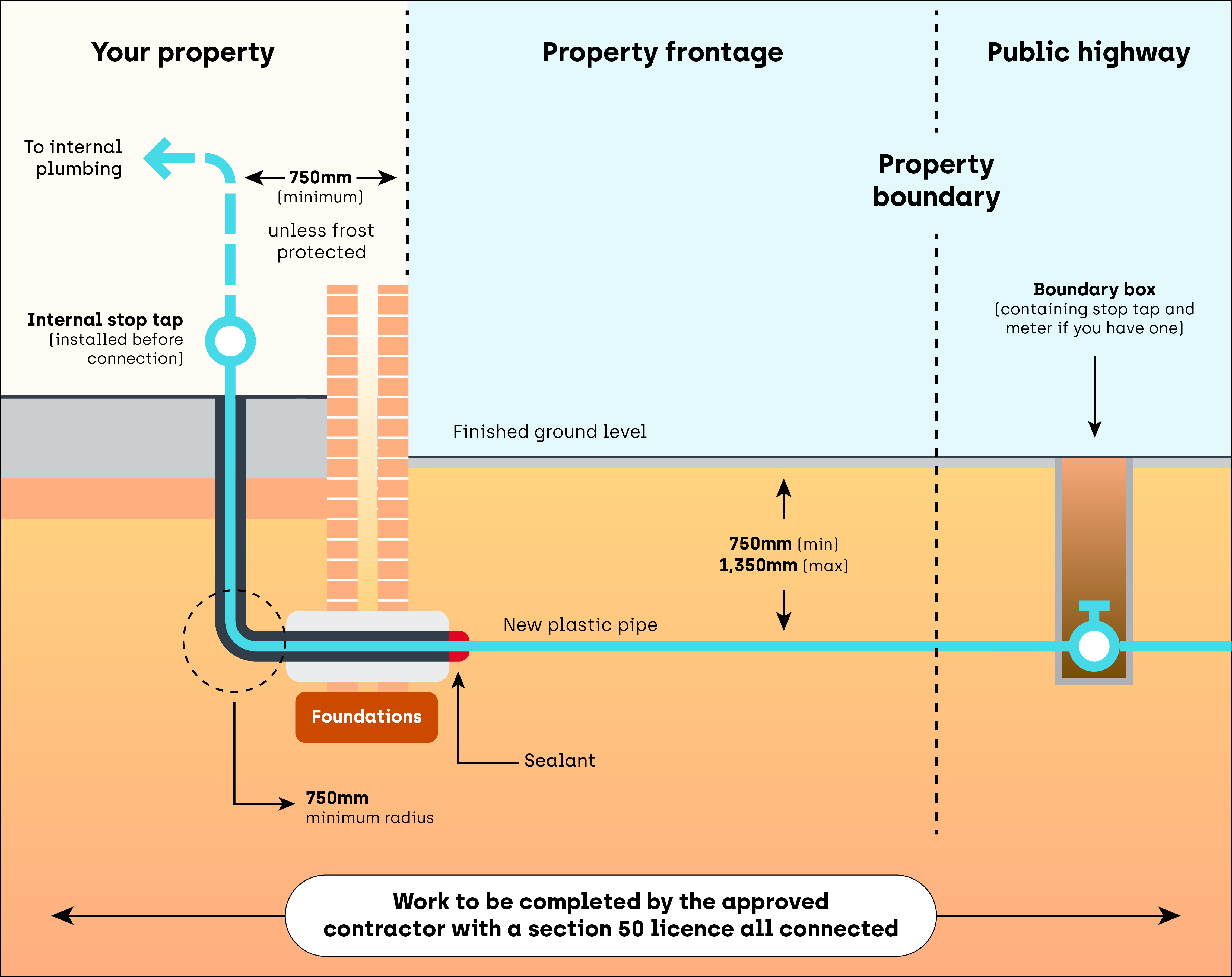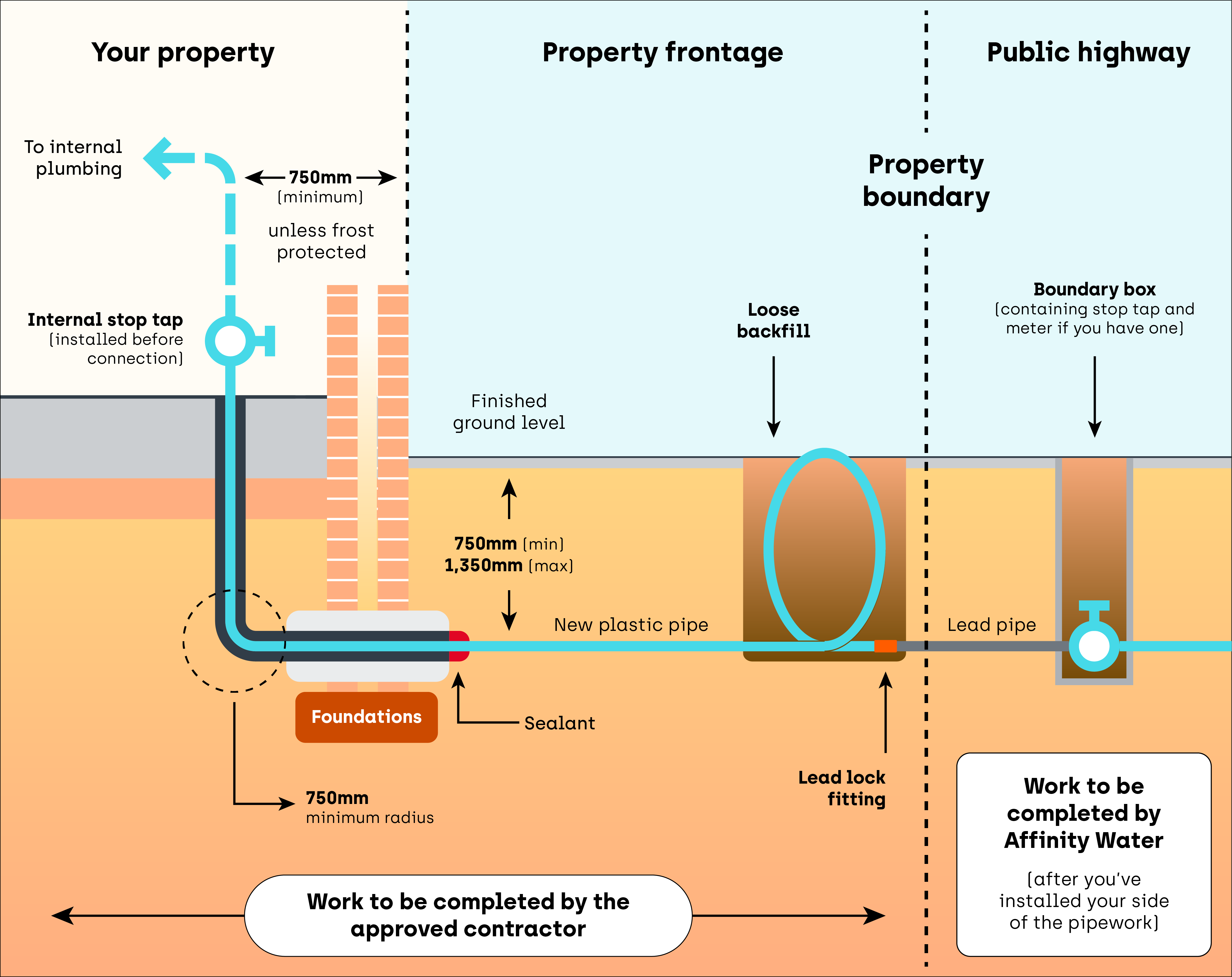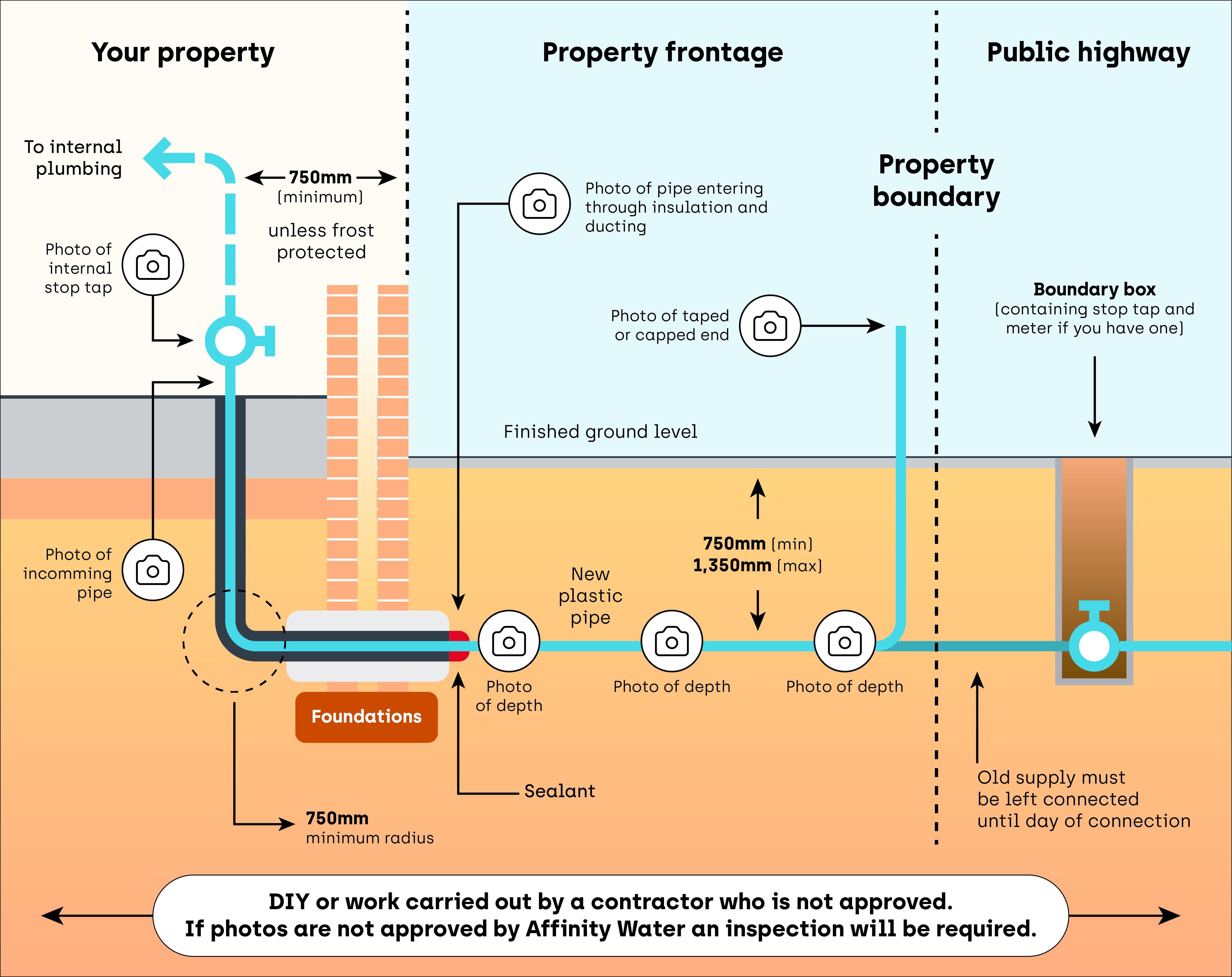About lead
Where does lead come from?
The water that leaves our treatment works and passes through our distribution network is virtually free of lead. However, in some areas, certain pipes might be made of lead. For example, the pipe that takes water to a home and also your internal plumbing.
How lead could affect you
Awareness of lead and its impact on health has increased in recent years. It’s been found to have more of an effect on foetuses and young children. This awareness has led to many campaigns which significantly reduce lead in our environment, such as unleaded petrol and lead-free paints. Therefore, it’s important that we reduce exposure to lead as much as possible, including in our drinking water.
How to check for lead pipes
First things first, do you know when your home was built? If it was built before 1970, you may have lead pipes in your plumbing system.
To check your pipes, it’s best to start where the water supply enters your house. This is typically where your internal stop tap is located (click here to see how to find this).
Lead pipes are normally dark grey in colour, but if gently scraped, shiny silver-coloured marks appear. They’re generally thicker than other metallic pipe materials and are also easier to scratch using a coin. If you're unsure, ask an approved plumber to carry out this check for you.
If your water supply does come through lead pipework, it’s advisable to run the water for a minute before using it for drinking or cooking purposes. In the long term, we would advise you to line or replace any lead pipework.
What are we doing about lead?
At our treatment works, we condition the water to help reduce the amount of lead that can dissolve from pipes. The current limit for lead in drinking water is 10 µg/l.
From 1st April 2025, if we test your water and find lead levels above 5 µg/l, we will replace our communication pipe (the pipe from our main in the road to the property boundary) and offer to replace your supply pipe (the pipe from the boundary to the internal stop tap in your property) if they are found to be lead.
Additionally, if you choose to replace your lead supply pipe, we’ll replace our communication pipe if it is constructed from lead. Please let us know if you’ve replaced your lead supply pipe, and we’ll begin investigating the communication pipe.
We recommend you use the WaterSafe website to find a WIAPs approved contractor to do this work.
Replacing your lead supply pipe
What you need to know
If you replace your lead supply pipe, it must comply with the Water Supply (Water Fittings) Regulations 1999. This is the legal duty of the owner, occupier, installer, or plumber to make sure the regulations are met and won’t have an impact on the quality of your water. For more advice on this, please visit Water Regs UK.
The requirements:
- All lead pipework within your property has been relayed and connected from the boundary stop tap to the internal stop tap. If your boundary stop tap is located within your property boundary, your contractor should be able to connect the new pipe to the boundary stop tap using a coupling. If your boundary stop tap is located on the public highway, your contractor may be able to connect if they have a licence to dig. We have more information further down this page.
- If you share a supply pipe with your neighbour(s), their lead pipes must also be replaced. You can find out more about shared supplies.
- The depth of the new pipe should be a minimum of 750mm but no more than 1350mm.
- The excavation is open for a site inspection at both the boundary stop tap and at the point of entry to the property so we can check it meets regulations.
- The new pipe must enter underneath the property’s foundations, be ducted and in most cases insulated. If this isn’t possible, please contact our Network Regulations team.
- The pipe should be laid on and surrounded by soils of a friable nature or free draining materials such as sand or gravel up to a maximum of 250mm above the supply pipe. The rest must be made up of infill to ground level.
Once the work is complete you need to do the following
You can get details of what to do next, by selecting the options below based on what kind of contractor you have used
I've used a WIAPS contractor with permission to dig on public highway (section 50 licence) and can connect to the boundary stop tap.
Arrow icon
Once the work is complete including the connection to the boundary stop tap and internal stop, send in the certification to our Network Regulations team.
What happens next?
They’ll review certification and validate, if there are any concerns our regs team will be in touch for further information. If we’re happy with the information, our contact centre will call to book an appointment with a technician to attend and raise follow on works. However, if you have not met the required standards, our regs team will contact you to discuss the next steps.
Fill out our form below, or send an email to: network.regs@affinitywater.co.uk
And include:
- Your name
- Address
- Email address
- Contact number
- Attach photo of certificate
The picture below shows how the pipe should be installed by a WIAPs contractor with a section 50 licence

I've used a WIAPS contractor who does not have permission to dig on public highway and cannot connect to the boundary stop tap.
Arrow icon
Re-lay the pipework within regulations stated at the top of this page.
Use a lead lock fitting to connect to the existing lead supply. This will be a temporary measure until we come and do the works.
Leave enough pipework to reach the boundary stop tap on the public highway + 1 meter extra. This is to make sure we have enough pipework to connect to the boundary stop tap.
Once you’ve completed the above and you’ve used a WIAPs approved plumber, send in the certification of the work to network.regs@affinitywater.co.uk. They’ll review the certification and validate. If there’s any concerns, our regs team will be in touch for further information. If we’re happy with the information, we’ll contact you to book an appointment with a technician to attend and raise follow on works.

I've not used a WIAPS approved contractor but the person I've used has permission to dig on the public highway (section 50 licence) to connect to the boundary stop tap.
Arrow icon
We’ll need to inspect the works once its been completed and the pipe work is connected to both the internal and external stop tap.
Leave the excavation open and call us on 0345 357 2407 to book an appointment with a technician to inspect the works.
If you’ve already backfilled the excavation
We’ll require photos including the following:
- The depth of the pipework at the boundary and midway (min depth 750mm - max depth 1350mm) – the picture must clearly show the depth with a tape measure or measuring stick.
- The pipework rising into the property or the pipework within the excavation at the point of entry to the property. This should also be insulated and ducted to protect the pipework
- The pipe within the excavation at the boundary of the property
- Photo of the new pipe connected to the internal stop tap.
- Photo of the connection to the boundary stop tap.
- Photo of the old pipe taped or capped end.
Fill out our form below to send the photos, or send an email to: network.regs@affinitywater.co.uk
And include:
- Your name
- Address
- Email address
- Contact number

What happens next?
Our regulation team will review the images to make sure they meet regulations. If we’re happy with the information, our contact centre will contact you to book an appointment with a technician to attend and raise follow on works.
I've not used a WIAPS approved plumber and they do not have permission to dig on the public highway and cannot connect to the boundary stop tap.
Arrow icon
Re-lay the pipework within regulations stated at the top of this page.
Use a lead lock fitting to connect to the existing lead supply. This will be a temporary measure until we come and do the works.
Leave enough pipework to reach the boundary stop tap + 1 meter extra, so that we can make sure there's enough pipework to connect to the stop tap.

If you’ve already backfilled the excavation
We’ll require photos including the following:
- The depth of the pipework at the boundary and midway (min depth 750mm - max depth 1350mm) – the picture must clearly show the depth with a tape measure or measuring stick.
- The pipework rising into the property or the pipework within the excavation at the point of entry to the property. This should also be insulated and ducted to protect the pipework.
- The pipe within the excavation at the boundary of the property
- Photo of the new pipe connected to the internal stop tap.
- Photo of the old pipe taped or capped end

Fill out our form below, or send these photos to: network.regs@affinitywater.co.uk and include the following:
- Name
- Address
- Email address
- Contact number
- Attached photos meeting the above criteria
What happens next?
Our regulation team will review the images to make sure they meet regulations. If we’re happy with the information, our contact centre will contact you to book an appointment with a technician to attend and raise follow on works.